Once seeing 1-877-222-5730 pop-up cutting in your browser activity and urging you to call for certified technician, it is high time to check your operating system and erase hidden infection. Why? Because it is a fake security warning used by swindlers to cause distress and trick you into paying for some kind of unreliable product. If you don’t want to be another victim of this trap, you should avoid taking its points for sure.
Something Important About 1-877-222-5730 Pop-up Scam
Are you going to buy the "your computer has been blocked…call support at 1-877-222-5730" saying? No. This bogus security alert, as research results suggest, is technically triggered by an adware or PUP that has invaded your system by chance mainly during careless download and installation. This scam may resemble the layout of BSOD, or pretend to be Microsoft/Apple support. Sometimes it is accompanied by a loud noise beeping “important security message” repeatedly. To remind you, all these are tactics to make you behave irrationally.
1-877-222-5730 Pop-up Can Bring Real Harms to Your System
Adware sucks in many ways. And 1-877-222-5730 pop-up is no exception. As a matter of fact, it is the one responsible for a string of issues occurring during your computer usage, especially web browsing.
It usurps your control over the browser via modifying relevant settings and activating certain bad codes, leading to constant browser deadlock and screen locking on scary and deceptive message.
Worse yet, it degrades system performance and security on the whole by running interference for other threats. Even hackers may access your computer and steal data or dump malware with help of it. Apparently this fake alert should be removed as soon as possible.
Plan C: Remove 1-877-222-5730 pop-up Manually from Win/Mac OS
Plan A: Remove 1-877-222-5730 pop-up Automatically from Win OS with SpyHunter
| *** SpyHunter by Enigma Software Group LLC is a spyware detection & removal tool providing rigorous protection against the latest threats including malware, trojans, rootkits & malicious software. *** It will update malware detection and removal definitions daily, offer you free technical support and custom fixes for hard-to-kill malware. *** This program certified by West Coast Labs’ Checkmark Certification System will assist you to protect your Win OS from malicious threats with limited interaction. |
Step 1. Click the following icon to get malware removal tool SpyHunter and install it on your computer


Step 3. Get rid of all detected items by clicking "Fix Threats" button
Plan B: Clean up 1-877-222-5730 pop-up Automatically from Your Mac with MacKeeper
MacKeeper has impressive features: *** Search and solve, that offers you information about cleaning, the performance and the security of your computer. *** Internet Security, a module that once installed protects you against malware. *** Antitheft, to locate your Mac in case of theft. *** Expert at hand, thanks to which you can get in touch with specialists. Therefore, if you want a program that allows you to have full control on your Mac's security, this is the tool you need. |
Step 1. Download MacKeeper and get it installed to your Mac by following the on-screen tips.
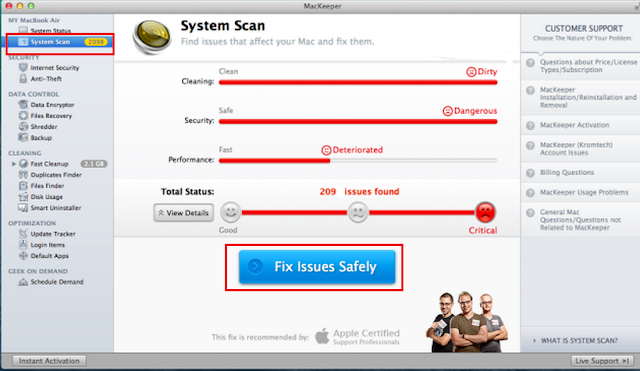
MacKeeper can do more than erase all sorts of internet threats and allow you to have full control on your Mac’s security. If you have any problem using this tool, you could get in touch with specialists from its Geek on Demand feature.

Plan C: Remove 1-877-222-5730 pop-up Manually
Step 1. End malicious processes generated by this Ad
On Windows Computer: Press key combination (Ctrl+Alt+Del) to launch Task Manager

On Mac OS:
Choose Force Quit from the Apple menu, or press key combination (Command + Option + Esc) to open the Force Quit Applications window to do this.
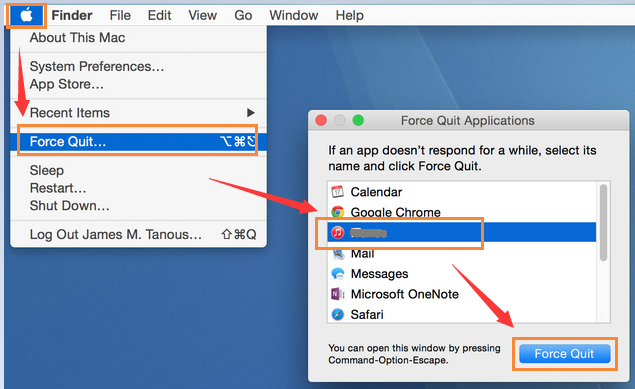
Step 2. Uninstall unwanted program/application that bundled with this Ad
On Windows Computer:
Win 7: Go to the “Start” menu, select “Control Panel”. Locate “Programs”. If there is anything related to 1-877-222-5730 pop-up program on the list of your Programs, then select it and uninstall it.
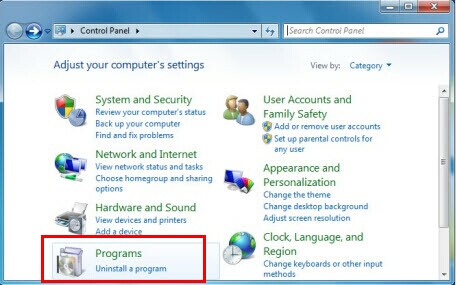
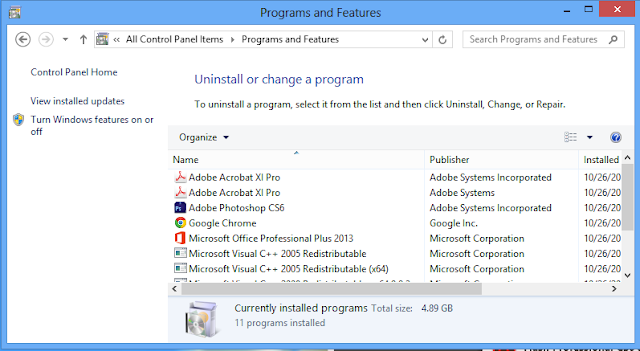
Win 10: Go to the “Start” menu, select “Settings” and then “System”; Click on “Apps & features”, if there is pop-up Ads related item, select and uninstall it.

On Mac:
Open the Applications folder in the Finder (or go to the Menu Bar, open the “Go” menu, and select Applications in the list), search for Suspicious application, and then drag it to the Trash (in the dock)
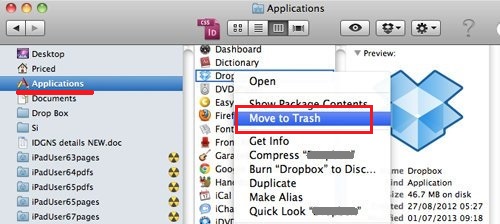
Step 3. Reset your affected browsers one by one
Google Chrome:
Click the Chrome menu on the browser toolbar and select Settings:
a) Scroll down to the bottom of chrome://settings/ page and click Show advanced settings
b) Scroll down to the bottom once again and click Reset Settings

Internet Explorer:
a) Click Start, click Run, in the opened window type "inetcpl.cpl".
b) Click "Advanced" tab, then click Reset.

Mozilla FireFox:
Open Firefox->> choose Help ->>choose Troubleshooting information
a) Click on Reset Firefox. Choose Reset Firefox again to make sure that you want to reset the browser to its initial state.
b) Click Finish button when you get the Import Complete window.
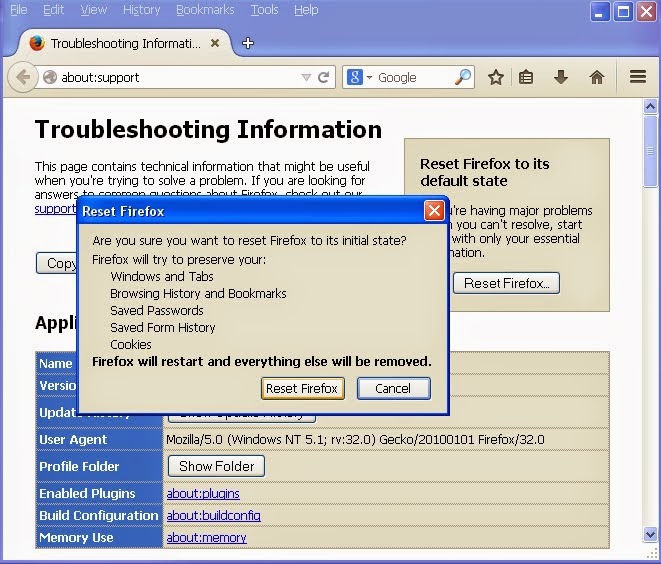
Safari
a) Open your Safari browser from the dock.
b) Click on Safari in your Safari menu at the top of your screen.
c) A drop-down menu will now appear. Choose the option labeled “Reset Safari…”
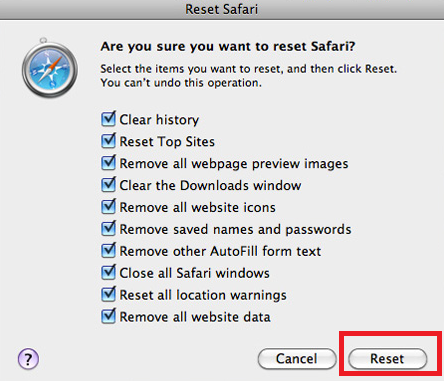
Step 4. Locate junk files and then delete them
On PC: find and delete associated files from C Drive
%ProgramData%\ %CommonProgramFiles%\*.exe %windir%\SeviceProfiles\LocalService\AppData\Local\Temp\random.tlb
On Mac: a) Access hidden Library folder by hold down the Option key while looking at the Go menu in Finder.
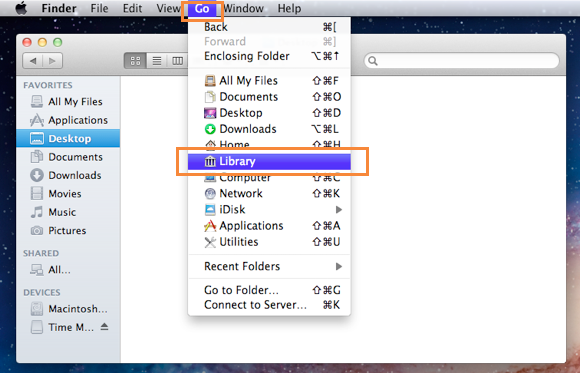
b) Delete related files. You need to check numerous system folders for obscure files such as:
/System/Library/Frameworks/v.framework /System/Library/Frameworks/VSearch.framework /Library/PrivilegedHelperTools/Jack /Library/InputManagers/CTLoader/ ~/Library/Internet Plug-Ins/TroviNPAPIPlugin.plugin /Applications/SearchProtect.app /Applications/InstallMac
(Tips: Care must be given when try this way. Don't empty your Trash until you've determined that everything is working OK, in case you need to restore something you deleted by accident.)
Specially Remind:
Anything taking a hand in your browsing and messing up things like 1-877-222-5730 pop-up scam should be eliminated in a timely fashion. If you are puzzled by the manual removal steps, you could feel free to get assistance from SpyHunter (For Win OS) or MacKeeper (For Mac).



No comments:
Post a Comment